Multipurpose helicopters in light of carrying capacity
In these disputes all nuances of a design and an economic component of helicopters are mentioned. In addition, the topic of concepts of application and the need for a particular technique is often raised. One of the most interesting topics in the helicopter sphere is the issue of “complete closure” of the whole range of emerging tasks. In other words, ideally, the helicopter fleet of the country, the armed forces or the airline company should have several types of equipment optimized for various tasks. Despite the seemingly high cost of purchasing several types of helicopters, this approach turns out to be economically advantageous, primarily in terms of operating costs and other costs. Simply put, the transportation of a small load on a light helicopter will cost the customer and the operator of equipment cheaper than the departure of a medium or heavy machine. It is often claimed that our country does not have such a "helicopter spectrum", but these words do not quite correspond to reality.
It is worth recognizing that over the past decades, our aviation industry managed to survive not the best of times and begin to get out of the crisis. Of course, this affected the helicopter industry. The light sector suffered the most. So, in 1992, for a number of economic and technical reasons, the production of the Mi-2 light multi-purpose helicopter was discontinued. It should be noted that these machines were manufactured in Poland. The fully domestic Ka-26 helicopter was discontinued at about the same time. After the manufacture of these two machines was completed, the domestic helicopter industry for some time almost completely forgot about the light helicopter sector. Rather, new designs were being developed, but mass production was still a long way off. The difficult economic situation in the country affected. As a result, a new lightweight multi-purpose Kamov helicopter, the Ka-226, made its first flight only in 1997 and entered the series in 2002. Another domestic aircraft of the same class, the Ansat, developed by the Kazan Helicopter Plant, took off two years later. The third project of a light multi-purpose helicopter with a lower mass was less successful. The Mi-34 helicopter, which made its first flight in 1986, over the years has managed to become the basis for several modifications, but so far the total number of vehicles built of this type does not exceed a couple of dozen.
As we see, light helicopters still remain not the most actively developing sector of the domestic aviation industry. There are several reasons for this. First of all, these are the features of the application. Light helicopters have serious load limitations and, as a result, cannot perform a considerable part of the tasks that are usually assigned to helicopters. For example, the Ka-226 with a maximum take-off weight per 3400 kilogram can carry no more than eight passengers or 1400 kg of cargo. Such characteristics of carrying capacity significantly reduce the possible range of tasks. At the same time, even with such data, the Ka-226 has good prospects in the respective fields. So, this helicopter was developed by request of the Russian Ministry of Emergency Situations, which subsequently, for a number of reasons, refused to purchase. In the future, commercial air carriers, the Ministry of Internal Affairs and the Ministry of Health became interested in the new multi-purpose helicopter. In addition, some foreign countries showed their interest in the Russian helicopter. If it comes to supplies, then it is likely that Ka-226 abroad will be engaged in the same areas as those remaining in Russia. Approximately in the same way the fate of Kazan "Ansat". Several units serve in the Ministry of Internal Affairs and the FSB, and the Ministry of Defense wants to receive at least three dozen such helicopters up to 2020. Also six boards serve in the Department of Forestry of South Korea. There they are assigned the duties of patrol and transport vehicles. Korean helicopters are used both to monitor forests and to deliver specialists or firefighters. As for the Mi-34 helicopter, its fate is a big question. In the middle of this year, several times there were messages about the possible closure of the project. Despite good export prospects (Brazil alone was ready to buy one and a half hundred of such machines at one time), the Mi-34 has several drawbacks, including operational ones.
Somewhat pleased with the fact that such troubles occur only in the sector of light helicopter. Heavier and lifting machines of domestic production, according to the already established tradition, continue to win more and more new contests. As a few years ago, the leader in this regard is the family of medium-sized multipurpose Mi-8 helicopters, including the Mi-171 and its modifications. Created half a century ago, the design turned out to be very successful, which is confirmed by more and more new contracts. The Russian Ministry of Defense alone, up to 2020, can purchase several hundred Mi-8 and Mi-17 / 171 in various modifications. Currently, the Russian Air Force has at least 600 helicopters of the Mi-8 family. To achieve the bar in 80% new technology, you will need to deliver at least 500 new helicopters. Moreover, this figure is valid only if, along with the supply of new cars, the old ones will be decommissioned. If we take into account the development of the resource of the existing helicopters, then the required number of new equipment can grow by several hundred units. Fortunately, the Mi-8 has a remarkable modernization potential. With the help of a timely update of the power plant and avionics, this family of rotary-wing machines can serve, at least, until the beginning of the thirties.
And yet the sector of medium helicopters did not go without a small fly in the ointment. The fact is that at present our country has only one project, which in the long run could replace the Mi-8 - the average multi-purpose helicopter Mi-38. This machine was originally designed specifically to replace the fleet of Mi-8 and Mi-17. In addition, when designing in the Mi-38 laid certain export prospects. So, the helicopter is equipped with a “glass cabin”, has a large number of composite parts, and can also be equipped with foreign-made turboshaft engines. At the same time, a large number of innovations led to the fact that in the nine years since the first flight, the Mi-38 has not yet entered mass production. The assembly of these machines is scheduled to begin only in 2014-15. Perhaps helicopter engineers use the remaining time not only to refine the design, but also to create special modifications: sanitary, search and rescue, etc.
Sometimes a Mi-8 helicopter has a claim appealing to its great age. As a matter of fact, the solid age of the model of the helicopter, on the basis of which new modifications are created, is not something unique, much less doubtful or even shameful. For example, the United States' heaviest and lifting helicopter - the already-mentioned CH-47 "Chinook" - was commissioned at the end of 1962. Since then, more than a dozen modifications have been created with various equipment and engines, and the question of creating a new helicopter of a similar class has not yet left the preliminary proposal stage. So the same age as the average Mi-8 is not going to leave the helicopter arena either. As for the main competitor of Chinook in the Indian tender, the Mi-26 first took to the air only in the late seventies. In addition, the proposed modification of the Indian Mi-26Т2 in fact retained only the glider of the very first Mi-26. In the course of the next modernization, the power plant and transmission, as well as avionics, underwent changes. It is especially noted that the new equipment allows to fly at any time of the day, and the crew was reduced from the original five people to two. At the same time, the helicopter did not lose its unique twenty-ton carrying capacity.
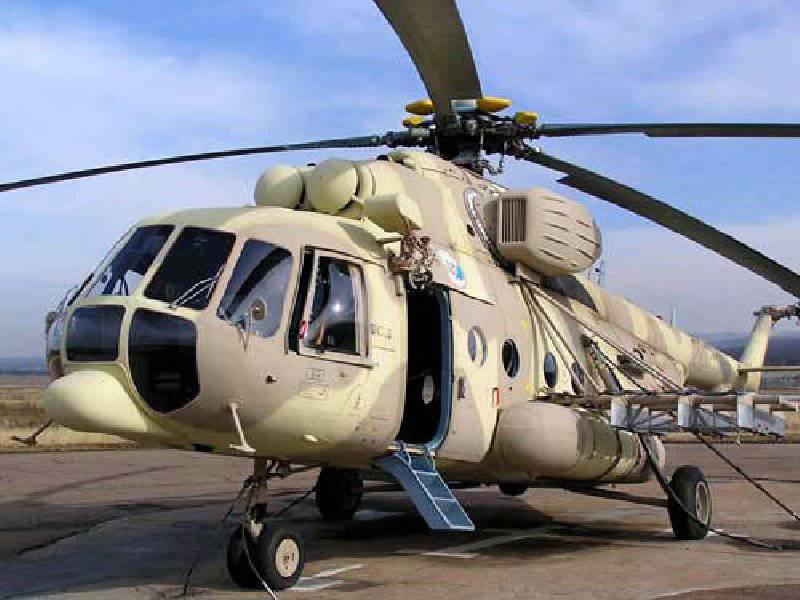
Thus, at the moment, domestic-made multi-purpose and transport helicopters “close” a rather large payload sector. Up to 1400-1500, kilograms of cargo can be carried by the Ka-226 and the Ansat. At the same time, Mi-34 can take on some of the responsibilities associated with lower loads. Cargoes weighing from one and a half to four tons (up to five on an external sling) can be trusted with Mi-8 / 17 family helicopters. The prospective Mi-38 is also capable of working with such loads, but its capabilities make it possible to transport up to six tons. Transportation of goods weighing more than six tons is currently the responsibility of transport aircraft of the corresponding class or Mi-26 helicopters. However, it often happens that the use of a helicopter is simply inexpedient: the transportation of any load by such a helicopter is more expensive than its delivery by plane. If there is no need to deliver the cargo to a certain point where there is no runway, or its dimensions fit into the cargo compartment of the corresponding aircraft, then the helicopter can only be used as a flying crane.
Of some interest are the “niches” that could be occupied by new domestic helicopters. So, Mi-34, which is in a difficult situation, could remarkably complement the already produced Ka-226 and Ansat. In this case, the light sector of the domestic helicopter industry will be able to cope with the growing number of purchases of foreign equipment of this class. The Mi-38, in turn, is an alternative rather than an addition to the Mi-8 / 17. As a result, it appears that our country does not yet have a helicopter with a payload of 6-10 tons. At one time, such loads were the responsibility of the Mi-6 and Mi-10 helicopters, but they have not been used in our country for more than ten years. At first glance, the simplest solution would be to create a new helicopter of the same class as, for example, the Mi-10. However, the development of a new machine of this class may be impractical. The fact is that at the present time there is no particular confidence in the need for such a helicopter. As already mentioned, the majority of transport tasks can be performed by airplanes, and the functions of an air crane are not so often required for them to make a separate helicopter with a payload within certain limits. Not entirely successful experience of the Mi-10 helicopter fully confirms this.
It is also necessary to remember that of the two priority areas - light and heavy helicopters - the light ones are of the greatest importance now. The combination of the characteristics of machines like the Ka-226 or Ansat makes them perfectly adapted to a number of specific tasks that are not advisable to perform using medium-sized helicopters. At the same time, the absence of rotary-winged machines with a payload of 6-10 tons can be compensated by aircraft or, if necessary, by appropriate distribution of helicopter "forces". Thus, at present, work on new helicopters should be carried out in two directions: to modernize existing models and at the same time build and develop a light sector. In due course, when industry capabilities allow, it will be possible to begin the development of a new heavy-class technology, and transfer light helicopters to a modernization “direction”.
In the context of the development of the domestic helicopter industry, it is worth considering the orders of the domestic Ministry of Defense. The bulk of the purchased multi-purpose and cargo helicopters are various modifications of the Mi-8 and Mi-17. This is understandable, because it is the G8 family that is the most popular in our Air Force. A certain amount of heavy Mi-26 is currently being upgraded, several more machines can be ordered soon. Not forgotten by the military and light sector. Purchased "Ansat" and Ka-226. It should be noted that light helicopters are purchased in small quantities. One of the main reasons for this are some features of the compliance requirements of the military and the capabilities of technology. Much more interest to the military is the Mi-8 and its modifications relating to the middle class. Light helicopters are designed to train pilots, which greatly influenced the desired number of cars.
In the future, the Ministry of Defense intends to buy several dozen medium Ka-60 / 62 helicopters with a payload of up to 2700 kilograms. These models are only being refined and are not yet ready for mass production. The first production helicopters Ka-60 and Ka-62 should get off the conveyor no earlier than 2014 of the year. In terms of their payload, the Kamov machines are located between the lightweight Ansats and the Ka-226 and the middle Mi-8 / 17. Cargo cabin on 2,7 tons of cargo or on 14 people are likely to be interested in the military, so that the new Ka-60 / 62 will be able to find their niche in the structure of the armed forces of the armed forces. It is noteworthy that the purchase of helicopters by the military in some way affects the commercial market. The deployment of large-scale construction for military needs reduces production costs, which as a result affects the cost of equipment for other customers. Accordingly, the helicopters will be a little more interesting for domestic and foreign airline companies.
The contracts of the Ministry of Defense are able to significantly stimulate the development of domestic helicopter industry and at the same time help create new models that, moreover, would have a good commercial potential. In addition, being the main customer, the military department is also able to form and develop the appearance of new technology. For example, the class of equipment with a payload in 6-10 tons that is absent in our helicopter industry at one time disappeared due to the fact that the military no longer considered it convenient and expedient. Following the military aviation, the carriers also refused such helicopters. And yet, the question of the presence of such helicopters, as well as the entire look of the "spectrum" of carrying capacity, still remains relevant. It is unlikely that in the very near future the structure of the helicopter fleet will undergo serious changes, but it is still not worth excluding the possibility of some progress in this direction.
On the materials of the sites:
http://airwar.ru/
http://rus.ruvr.ru/
http://ria.ru/
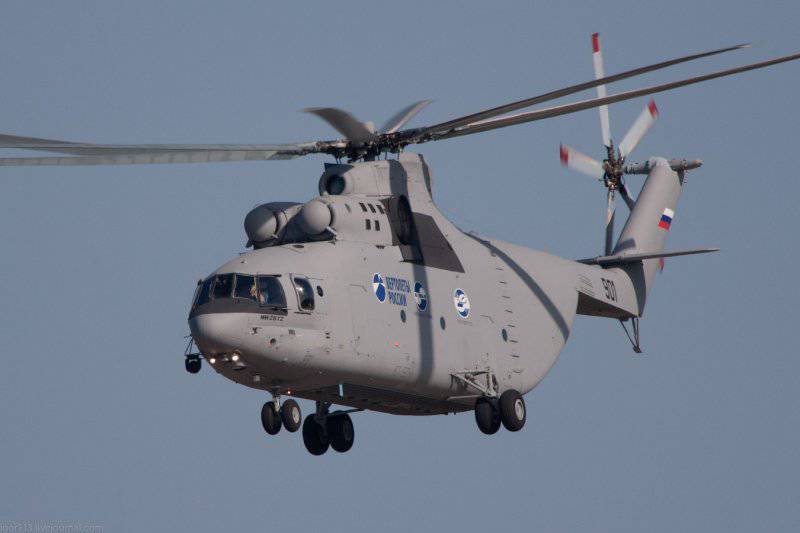
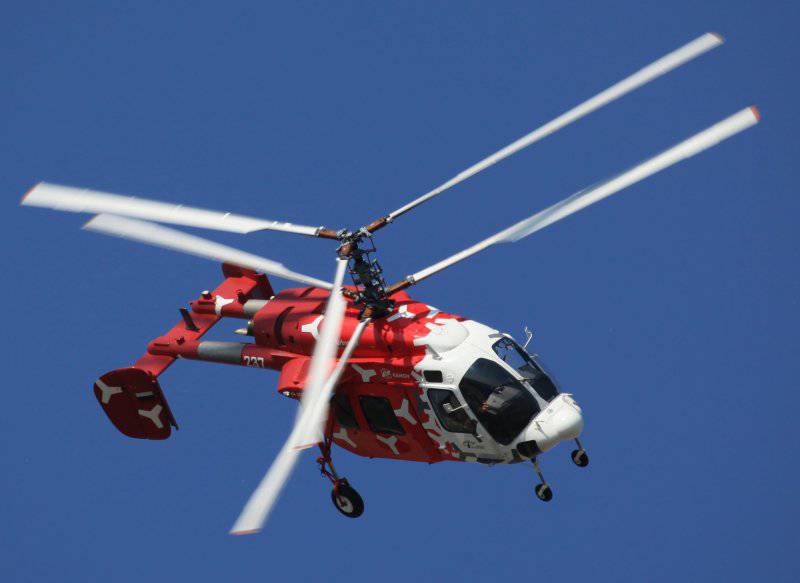
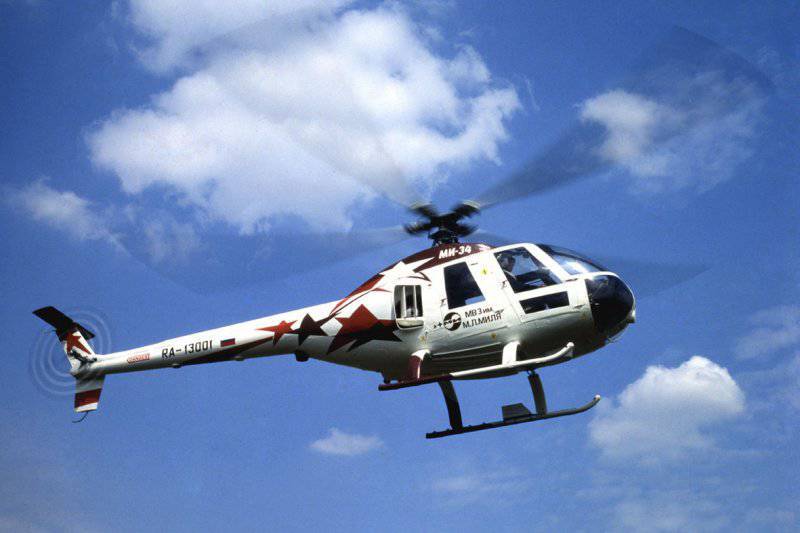
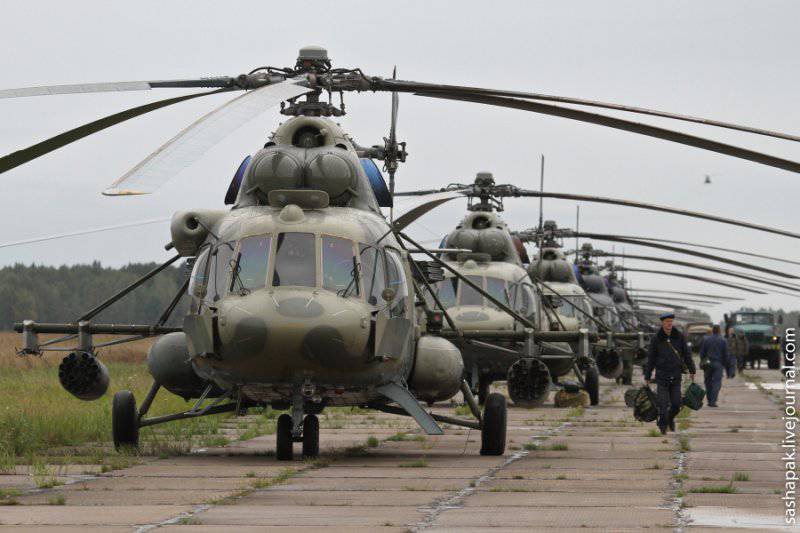
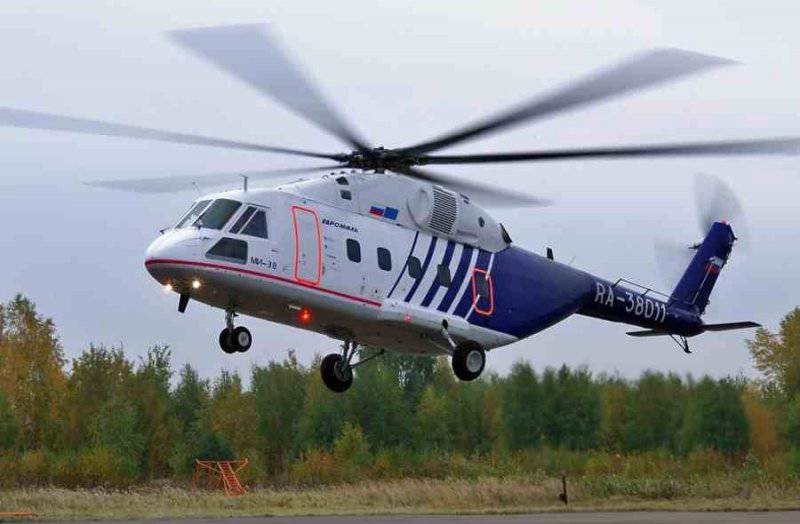
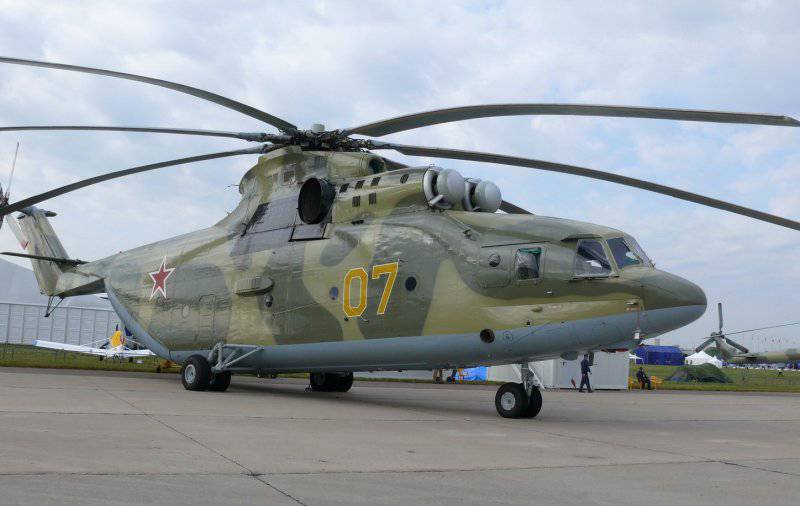
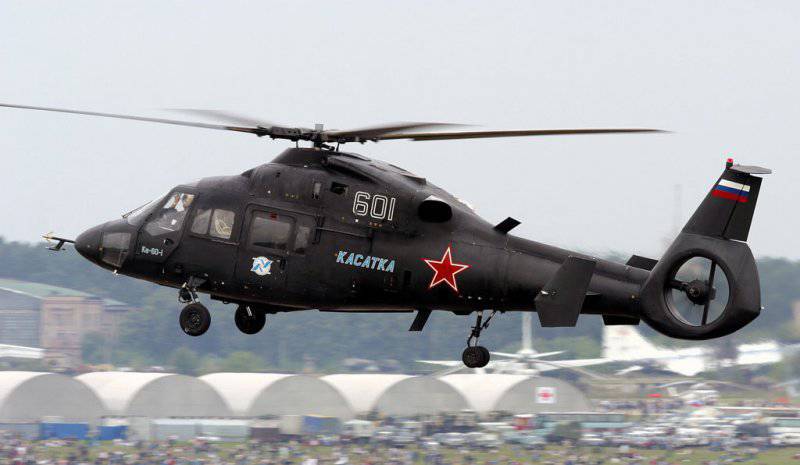
Information